 August 26, 2022 Grebes Nests Receive Help from DWR Western and Clark’s grebes, with their distinctive red eyes, graceful necks, and long yellow bills, have returned to the Thermalito Afterbay for their nesting season. The shallow nature of the Afterbay is perfect for these two species of grebes who, along with only a few other aquatic bird species, build their nests on the water’s surface. Reservoirs like Thermalito Afterbay support more than 90 percent of the state’s breeding-grebe population, according to the Audubon Society. DWR voluntarily restricts fluctuating the elevation of the Thermalito Afterbay for several weeks during the grebes nesting season because significant decreases in reservoir elevation could strand the nests out of the water or submerge them if elevations increase. Find more information about the grebes on the DWR Updates webpage. Photos can be found on DWR’s Pixel webpage – enter Grebes in the search bar after creating a free username and password to log in. Fish Advisory for Antelope Lake The California Office of Environmental Health Hazard Assessment (OEHHA) released an advisory for safe eating advice for black bass species, bullhead species, Golden Shiner, and sunfish species caught at Antelope Lake in Plumas County due to levels of mercury found in fish caught from the lake. The fish species tested at Antelope Lake had lower contaminant levels than is typical at many other California water bodies. All species tested at Antelope Lake can be eaten at least two times a week. Mercury is released into the environment from mining and burning coal. It accumulates in fish in the form of methylmercury, which can damage the brain and nervous system, especially in developing children and fetuses. Because of this, OEHHA provides recommendations for safe eating that vary by age and gender. More information can be found in the OEHHA news release.  OROVILLE RECREATION AND BOAT RAMP UPDATE The boat ramp at Lime Saddle recreation area will be closing Monday, Aug. 29 as lake elevations fall below safe launching levels. The Lime Saddle Marina will remain open. The Bidwell Canyon, Spillway, and Loafer Point boat ramps remain open, along with the Lime Saddle and Bidwell Canyon marinas. Reservations for campgrounds in the Lake Oroville State Recreation Area (LOSRA) can be made by visiting the California Department of Parks and Recreation (CA Parks) LOSRA website. The Lake Oroville area has over 92 miles of trails, open to hiking, with some also allowing for horseback riding, some also allowing biking, and some designated for “multi-use” where all three activities may occur on the same trail. The trails provide users with spectacular views of Lake Oroville and the valley, home to the Sutter Buttes – named the smallest mountain range in the world. Trails and their permitted uses, day use areas, boat ramps and other recreation facilities are featured on DWR’s interactive map on DWR’s Lake Oroville Recreation webpage. Step inside the Lake Oroville Visitor Center, open Tuesday through Thursday from 9 a.m. to 5 p.m., to learn about the State Water Project and history of the area. The Thermalito Forebay and Afterbay also provide a wide range of recreation opportunities including fishing, hiking, biking and boating. Non-motorized boating is permitted in the North Forebay, and motorized boating is permitted in the South Forebay and Afterbay. The North Forebay Aquatic Center has kayaks, paddle boards, and other watercraft available for rent. Non-motorized boating is also permitted in the Thermalito Diversion Pool with car-top boat launching access just before the restroom on Cherokee Road. Lake Oroville and the Oroville Wildlife Area also have car-top boat launch areas. 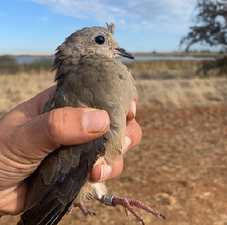 TRACKING DOVE POPULATIONS Staff from the California Department of Fish and Wildlife (CDFW), along with assistance from DWR staff, have been in the Oroville Wildlife Area (OWA) since July 11 to collect information on the local mourning dove population. Working in the safflower and sunflower fields in the OWA, planted by CDFW staff to provide a readily available food source for doves and many other bird species, staff successfully captured and placed identifying bands on 33 doves. Mourning doves are an important migratory game bird and California is one of 39 states participating in a national effort to monitor the mourning dove population in order to better estimate annual survival and guide harvest-management decisions. CDFW and DWR staff record the sex and approximate age of each banded bird and place a metal band with a unique identification number and a toll-free phone number to report the band around the dove’s leg. The hunter is the critical link in the dove banding study. Their reporting of the dove’s leg band enables wildlife managers to understand the effects of annual hunting regulations on mourning dove populations and allows for greater understanding of their migratory patterns. The Oroville Wildlife Area is a popular hunting location and CDFW expects 80 to 100 opening day hunters when Dove season opens on Sept. 1. For more information on CDFW activities in the OWA to increase forage for local and migratory birds, visit the DWR Updates webpage and search 'sunflower' to access the digital article and previous stories in the Lake Oroville Community Update newsletter. 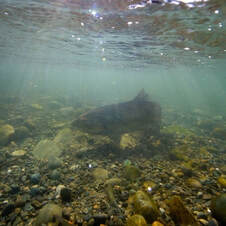 CHINOOK SALMON RETURN TO THE FEATHER RIVER Chinook salmon are completing their life cycle and returning home to the Feather River to lay eggs for the next generation of salmon. The Feather River Fish Hatchery plans to open the fish ladder the week of Sept. 12 to begin hatchery spawning operations which enables millions of Chinook salmon to be released to the river every spring. Visitors to the Hatchery’s Fish Barrier Dam Overlook Viewing Area can watch salmon jumping and after the fish ladder opens in mid-September, visitors can watch salmon swim up the ladder at the Underwater Viewing window. The Overlook is located off Table Mountain Boulevard north of the Hatchery. Visitors are also encouraged to visit the hatchery (open daily 8 a.m. to 3 p.m.) and attend the 28th Annual Salmon Festival in Oroville on Sept. 24. 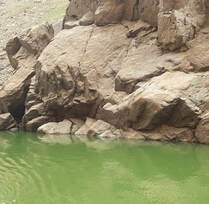 BLUE GREEN ALGAE MONITORING DWR environmental scientists regularly monitor Lake Oroville, the Thermalito North Forebay, and the Thermalito Afterbay for blue-green algae and their toxins, taking water samples from various locations regularly from Memorial Day through Labor Day. There are currently no harmful algal bloom (HAB) advisories for Lake Oroville, the Thermalito Forebay, or the Thermalito Afterbay. If elevated levels of cyanobacteria toxins are found, DWR staff work with California’s Regional Water Quality Control Board and recreation area managers to notify the public and post advisory signs at affected waterbodies. To learn more about HABs, or to report a HAB, visit the Water Board’s website. Blue-green algae (cyanobacteria) is a natural component of ecosystems. Under certain conditions, including warmer temperatures and increased nutrient loads, algae can grow rapidly causing “blooms.” Algal blooms sometimes produce toxins that can be harmful to people and animals. Visit this comparison chart on the HABs website for additional information. CURRENT LAKE OPERATIONS The elevation of Oroville’s reservoir is about 709 feet elevation and storage is about 1.32 million acre-feet (MAF), which is 38 percent of its total capacity and 63 percent of historical average. Temperatures are forecasted to be in the low 90s through the weekend and increasing to the upper 90s and low 100s next week. The Feather River releases are currently at 3,000 cubic feet per second (cfs) to meet downstream Delta water quality and outflow needs. Flows through the City of Oroville are 1,000 cfs with 2,000 cfs released from the Thermalito Afterbay Outlet (Outlet) for a total of 3,000 cfs downstream of the Outlet. Flows through the low flow channel may be reduced next week for fisheries purposes. The public can track precipitation, snow, reservoir levels, and more at the California Data Exchange Center at www.cdec.water.ca.gov. The Lake Oroville gage station is identified as “ORO”. All data as of midnight 8/25/2022  California is in its third year of drought conditions. With water conservation now a way of life in California, everyone is encouraged to find ways to save water. See tips, tools, and ideas on the Save Our Water website. Information about real time local hydrological conditions, forecasts, and water conditions is available on DWR’s new website California Water Watch.  August 19, 2022 Tracking Dove PopulationsStaff from the California Department of Fish and Wildlife (CDFW), along with assistance from California Department of Water Resources (DWR) staff, have been in the Oroville Wildlife Area (OWA) since July 11 to collect information on the local mourning dove population. Working in the safflower and sunflower fields in the OWA, that were planted by CDFW staff to provide a readily available food source for doves and many other bird species, staff successfully captured and placed identifying bands on 33 doves. Mourning doves are an important migratory game bird and California is one of 39 states participating in a national effort to monitor the mourning dove population in order to better estimate annual survival and guide harvest-management decisions. CDFW and DWR staff record the sex and approximate age of each banded bird and place a metal band with a unique identification number and a toll-free phone number to report the band around the dove’s leg. The hunter is the critical link in the dove banding study. Their reporting of the dove’s leg band enables wildlife managers to understand the effects of annual hunting regulations on mourning dove populations and allows for greater understanding of their migratory patterns. The Oroville Wildlife Area is a popular hunting location and CDFW expects 80 to 100 opening day hunters when Dove season opens on Sept. 1. For more information on CDFW activities in the OWA to increase forage for local and migratory birds, visit the DWR Updates webpage and search “sunflower” to access the digital article and previous stories in the Lake Oroville Community Update newsletter.  CHINOOK SALMON RETURN TO THE FEATHER RIVER Chinook salmon are completing their life cycle and returning home to the Feather River to lay eggs for the next generation of salmon. The Feather River Fish Hatchery plans to open up the fish ladder the week of Sept. 12 to begin hatchery spawning operations which enables millions of Chinook salmon to be released to the river every spring. Visitors to the Hatchery’s Fish Barrier Dam Overlook Viewing Area can watch salmon jumping and after the fish ladder opens in mid-September, visitors can watch salmon swim up the ladder at the Underwater Viewing window. The Overlook is located off Table Mountain Boulevard north of the Hatchery. Visitors are also encouraged to visit the Hatchery (open daily 8 a.m. to 3 p.m.) and attend the 28th Annual Salmon Festival in Oroville on Sept. 24. WATER SUPPLY STRATEGY Last week, Governor Gavin Newsom announced California’s latest actions to increase water supply and adapt to more extreme weather patterns caused by climate change. The actions, outlined in a strategy document called “California’s Water Supply Strategy, Adapting to a Hotter, Drier Future” (Strategy), follows $8 billion in state investments over the last two years to help store, recycle, de-salt, and conserve the water needed to keep up with the increasing pace of climate change. The strategy calls for investing in new sources of water supply, accelerating projects, and modernizing how the state manages water through the use of new technologies. Strategies to rebuild the way we source, store, and deliver water include creating storage space above and below ground to capitalize on big storms when they do occur, better recycling and safer reuse of wastewater currently discharged into the ocean, becoming more efficient water users through conservation, desalination efforts – especially of brackish groundwater which requires significantly less energy to treat than seawater, and groundwater recharge. An additional $2.8 billion in the 2022-23 budget for drought relief to hard hit communities, water conservation, environmental protection for fish and wildlife, and long-term projects to permanently strengthen drought resilience will help combat the accelerating impacts of the warming climate on our water supply. Governor Newsom anticipates working with the Legislature to achieve statewide goals by creating local solutions through collaboration within and across watersheds. The news release and link to the Strategy report is available on the Office of the Governor’s newsroom webpage. 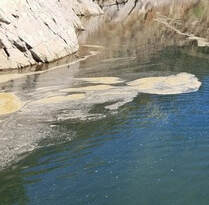 BLUE GREEN ALGAE MONITORING DWR environmental scientists regularly monitor Lake Oroville, the Thermalito North Forebay, and the Thermalito Afterbay for blue-green algae and their toxins, taking water samples from various locations regularly from Memorial Day through Labor Day. There are currently no harmful algal bloom (HAB) advisories for Lake Oroville, the Thermalito Forebay, or the Thermalito Afterbay. If elevated levels of cyanobacteria toxins are found, DWR staff work with California’s Regional Water Quality Control Board and recreation area managers to notify the public and post advisory signs at affected waterbodies. To learn more about HABs, or to report a HAB, visit the Water Board’s website. Blue-green algae (cyanobacteria) is a natural component of ecosystems. Under certain conditions, including warmer temperatures and increased nutrient loads, algae can grow rapidly causing “blooms.” Algal blooms sometimes produce toxins that can be harmful to people and animals. Visit this comparison chart on the HABs website for additional information. 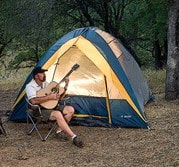 OROVILLE RECREATION The Lake Oroville area has over 92 miles of trails, open to hiking, with some also allowing for horseback riding, some also allowing biking, and some designated for “multi-use” where all three activities may occur on the same trail. The trails provide users with spectacular views of Lake Oroville and the valley, home to the Sutter Buttes – named the smallest mountain range in the world. Trails and their permitted uses, day use areas, boat ramps and other recreation facilities are featured on DWR’s interactive map on DWR’s Lake Oroville Recreation webpage. Step inside the Lake Oroville Visitor Center, open Tuesday through Thursday from 9 a.m. to 5 p.m., to learn about the State Water Project and history of the area. At Lake Oroville, the Lime Saddle, Bidwell Canyon, Spillway, and Loafer Point boat ramps are open, along with the Lime Saddle and Bidwell Canyon marinas. Reservations for campgrounds in the Lake Oroville State Recreation Area (LOSRA) can be made by visiting the California Department of Parks and Recreation (CA Parks) LOSRA website. The Thermalito Forebay and Afterbay also provide a wide range of recreation opportunities including fishing, hiking, biking and boating. Non-motorized boating is permitted in the North Forebay, and motorized boating is permitted in the South Forebay and Afterbay. The North Forebay Aquatic Center has kayaks, paddle boards, and other watercraft available for rent. Non-motorized boating is also permitted in the Thermalito Diversion Pool with kayak access just before the restroom on Cherokee Road. Lake Oroville and the Oroville Wildlife Area also have car-top boat launch areas. CURRENT LAKE OPERATIONS The elevation of Oroville’s reservoir is about 713 feet elevation and storage is about 1.35 million acre-feet (MAF), which is 38 percent of its total capacity and 62 percent of historical average. Temperatures are forecasted to continue in the low-100s through the weekend and slightly dropping to the high-90s next week. The Feather River releases are currently at 3,000 cubic feet per second (cfs) to meet downstream Delta water quality and outflow needs. Flows through the City of Oroville are 1,000 cfs with 2,000 cfs released from the Thermalito Afterbay Outlet (Outlet) for a total of 3,000 cfs downstream of the Outlet. Flows through the low flow channel may fluctuate through the week for fisheries purposes. The public can track precipitation, snow, reservoir levels, and more at the California Data Exchange Center at www.cdec.water.ca.gov. The Lake Oroville gage station is identified as “ORO”. All data as of midnight 8/18/2022  California is in its third year of drought conditions. With water conservation now a way of life in California, everyone is encouraged to find ways to save water. See tips, tools, and ideas on the Save Our Water website. Information about real time local hydrological conditions, forecasts, and water conditions is available on DWR’s new website California Water Watch. July 29, 2022 Oroville Dam Citizens Advisory Commission Meeting The California Natural Resources Agency held its 11th Oroville Dam Citizens Advisory Commission meeting on July 29, 2022. The public meeting at Oroville’s Southside Community Center included a brief update on the development of the Commission report, a recap of a flood safety stakeholder technical workshop held in April, and a presentation from the California Department of Water Resources (DWR) on dam facilities management and annual maintenance planning. Members of the public offered comments and asked questions. The Oroville Dam Citizens Advisory Commission is a forum for questions and feedback from the communities surrounding Oroville Dam. The meeting transcript and presentations will be available on the Commission’s website in the coming weeks at https://bit.ly/OrovilleCAC. 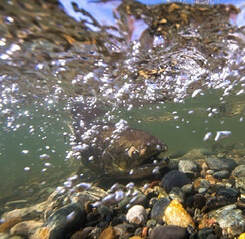 WATER SAFETY The hot weather is pushing more people to visit and explore our local waterways, lakes, and reservoirs, including the Feather River and Lake Oroville. Boaters are reminded to place safety as their top priority by making sure they and their passengers are wearing life jackets. U.S. Coast Guard statistics show that 80 percent of all drowning victims were not wearing a life jacket. Abiding by posted speed limits and signage, particularly regarding locations where swimming is prohibited such as in marinas or near boat docks or launch ramps, as well as paying attention to warning buoys, especially in reservoirs or other waterbodies with fluctuating water elevations, can greatly increase the safety of those with and around you. Lake Oroville has a lake-wide 5-mph speed limit at nighttime and personal watercraft or jet skis are prohibited from nighttime operation, even if they have navigation lights. Hours of operation at Thermalito Afterbay are 1.5 hours before sunrise to one hour after sunset. Boaters there are reminded of that waterbody’s 5-mph limit north of the Highway 162 bridge and within 200 yards of shore for all waterbodies in California. Water enthusiasts are also reminded that, even on a hot day, the water temperature can be cold and trigger cold water immersion shock. Cold water reduces body heat 25 to 30 times faster than air does at the same temperature and can quickly turn a good time into a life-threatening situation. Knowing the symptoms of hypothermia (when your body loses heat faster than it be produced) such as uncontrollable shivering, blue lips, clumsiness or lack of coordination, or bright red, cold skin, particularly among children who may be unaware of, or desire to ignore, their symptoms, can prevent a tragedy from occurring. If you suspect you or someone else is having these symptoms, act quickly to get out of the water, seek help, and begin gradual warming of the body. Taking sensible and even extra precautions when recreating around or in the water will help keep you and your family safe this summer. For more information on boating requirements and safety, visit the California Division of Boating and Waterways and cold-water safety tips at the National Weather Service’s Safety webpage.  OROVILLE RECREATION The Lake Oroville area has over 92 miles of trails, many open to horseback riding, with spectacular views of Lake Oroville and the valley, home to the Sutter Buttes – named the smallest mountain range in the world. Trails, permitted uses, day use areas, boat ramps and other recreation facilities are featured on DWR’s interactive map on DWR’s Lake Oroville Recreation webpage. And step inside the Lake Oroville Visitor Center, open Tuesday through Thursday from 9 a.m. to 5 p.m., to learn about the State Water Project and history of the area. At Lake Oroville, the Lime Saddle, Bidwell Canyon, Spillway, and Loafer Point boat ramps are open, along with the Lime Saddle and Bidwell Canyon marinas, and reservations for campgrounds in the Lake Oroville State Recreation Area (LOSRA) can be made by visiting the California Department of Parks and Recreation (CA Parks) LOSRA website. The Thermalito Forebay and Afterbay also provide a wide range of recreation opportunities including fishing, hiking, biking and boating. Non-motorized boating is permitted in the North Forebay, and motorized boating is only permitted in the South Forebay and Afterbay. The North Forebay Aquatic Center has kayaks, paddle boards, and other watercraft available for rent. Non-motorized boating is also permitted in the Thermalito Diversion Pool with kayak access just before the restroom on Cherokee Road. Lake Oroville and the Oroville Wildlife Area also have car-top boat launch areas. 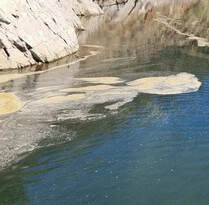 BLUE GREEN ALGAE MONITORING DWR environmental scientists regularly monitor for blue-green algae and their toxins during the summer months. There are currently no harmful algal bloom (HAB) advisories for Lake Oroville, the Thermalito Forebay, or the Thermalito Afterbay. Water samples are taken at various locations regularly from Memorial Day through Labor Day. To learn more about HABs, or to report a HAB visit the Water Board’s website. CURRENT LAKE OPERATIONS The elevation of Oroville’s reservoir is about 727 feet elevation and storage is about 1.47 million acre-feet (MAF), which is 42 percent of its total capacity and 62 percent of historical average. Temperatures are forecasted to continue in the low 100s through the weekend and into next week. The Feather River releases are currently at 3,750 cubic feet per second (cfs) to meet downstream Delta water quality and outflow needs. Flows through the City of Oroville are 1,300 cfs with 2,450 cfs released from the Thermalito Afterbay Outlet (Outlet) for a total of 3,750 cfs downstream of the Outlet. Flows through the low flow channel may fluctuate through the week for fisheries purposes. The public can track precipitation, snow, reservoir levels, and more at the California Data Exchange Center at www.cdec.water.ca.gov. The Lake Oroville gage station is identified as “ORO”. All data as of midnight 7/28/2022  California is entering its third year of drought conditions. With water conservation now a way of life in California, everyone is encouraged to find ways to save water. See tips, tools, and ideas on the Save Our Water website. Information about real time local hydrological conditions, forecasts, and water conditions is available on DWR’s new website California Water Watch. |
Archives
October 2023
Categories
All
|

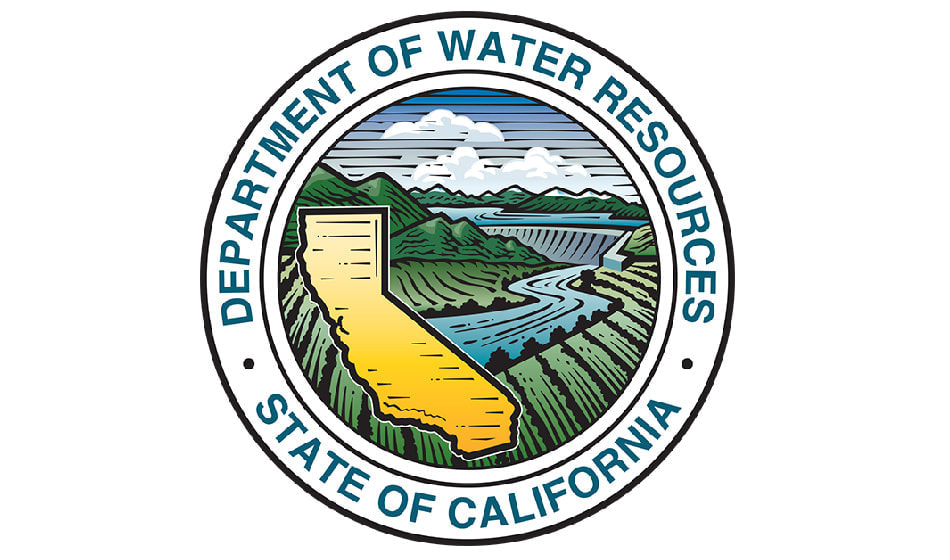
 RSS Feed
RSS Feed